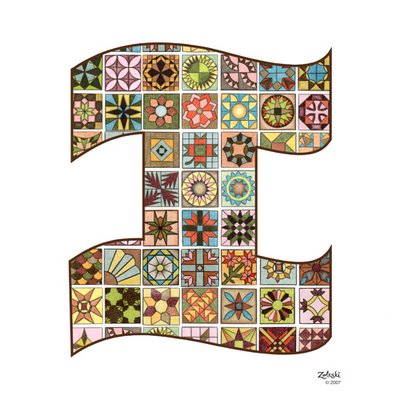











~ SUMMARY ~
“CONSIDERING A BABY?”
Considering a baby? is a hypertext narration
written by the North American writer, Adrienne Eisen. It talks about the
different periods or stages that women can have while they are pregnant. I
could even go further and say it can be a funny manual for every woman who is
expecting a baby. It is not saying true facts; it’s not saying that IT is what
is going to happen, but just gives some advice for women so they know what to
“look forward”. The best of Adrienne’s works is the way she talks. She is not
ashamed to say what she wants to say. Sex, vaginas, relationships with mothers,
friends and husband… Those topics are in our lives constantly, at least in
where I am from, Spain. However, in a country as conservative as the United
States of America, it seems to be a bit strange for the author to talk about
those issues so openly; usually we would think they are taboo, but in this
narration the author brings them up easily.
The hypertext is divided in 9 parts. The 9 months that a woman
has a baby in her uterus. Each month talks about something different. These
various topics are discussed:
Month one:
Your finances
| Your sleep
| Your skin
Month two:
Your Mood | Your Friends
| Your Spice
Month three:
Month four:
Your Clothes
| Your
Worries | Your
Discharge
Month five:
Month
six:
Month
seven:
Your Husband
| Your
Sex Life | Your Vagina
Month
eight:
Your Moods
| Your
Mother | Your
Instincts
Month
nine:
Each chapter has the same options to
choose what you can read. This makes the book have the same ending any way you
read it, I mean, any way you follow it will always take you to the same place
(chapter number 9 “your labor”). In a first reading you will never find the
same option, which makes the reading easier. At the same time, it gives you the
possibility to read different readings as long as you choose different options
each month. (Right now I’m talking about just one reading, and how it will
always have different choices). And although this hypertext has that advantage,
it also has some disadvantages. That way
that it’s written by having every month the same options restricts the book for
further readings. For example, in month three there are only two options. If
you want to read the hypertext more that two times you will have to repeat one
of the topics already picked. What I’m trying to say is that there is not a
diverse variety of choices for further readings.
I think it is worth it to talk about her
writting skills. In each chapter, or as I like to call it commentary, we can
see several similities in the way she writes. Humor, sarcasm, irony, and even
exaggeration are her most linguistic styles used in Considering a baby?. She uses colloquial words and american slangs
which can difficult the reading for a foreign person like me; but at the same
time it is good for the reader to learn a different vocabulary or expressions.
She has a way with words that makes the readings seem like monologues about the
pregnancy. Usually each chapter (or month) deals with the subject which has
been picked, and always ends with an unforeseeable touch.
……………………………………………………………………………………………………………………
This
is a summary of the different topics I dealt with through my reading. This is
going to help us to understand all what I was talking about earlier.
Month one:
“Your
finances” – It talks about how much money the woman is going to spend in
pregnancy tests. First because it will be too early to test herself, but she
will want to know anyways so she will spend her money on it, and then because
when she knows for sure that she is pregnant she will want to check with
different brands, just to make sure. At the end she says that by the time she
believes she is pregnant she will have spent all the money for the kid’s
college.
Month two:
“Your friends” – It talks about friends
and how she will sarcastically loose them because she is pregnant and they are
not. They give her books that she will not read, and then they will tell her
what she shouldn’t do and that she should know because she was supposed to read
those books. She will get mad at them for not understanding her and giving her
advice while they are not even pregnant or have children at all.
Month three:
“Your naps” – It is a commentary about being
pregnant and taking naps. The author uses humor to describe women’s thoughts
during pregnancy. She says that women will hate other pregnant women in
magazines because they look so beautiful when they are pregnant. Women will
feel jealous of the rich women and desire their lives until they realize that
those rich women have messed up their lives.
Month four:
“Your clothes” – This time talks about the
clothes and how much you will hate them. She won’t want to buy any of them, but
at the end she will because she won’t fit in any of hers or her husband’s
clothes.
Month five: “Your model” – It talks about all
the thoughts that the woman will have when she sees the cover of a magazine
with a pregnant woman in it. She’s not the only person with a huge belly so
that will make you feel better. Models will pose three months after the baby is
due; therefore, they need to loose weight quickly. She will need some
incentive, and the only one she will find we’ll be having a surgery. In another magazine she sees a model uses the
baby to cover the belly, so she will have hope again.
Month six: “Your mucus” – That is a funny
commentary about how the women’s vagina will be feeling. There are different
adjectives, pretty slang-ish all of them: “squishy, thick, juicy, springy and
saggy”. What she is trying to say here is that the vagina will be originating
some kind of mucus, that will scare women by thinking it’s a miscarriage. But
when they find out it isn’t, that will make them happy so they will want to
show it to their husband, who doesn’t really want to see it, but he will
because he has to be supportive.
Month seven:
“Your husband” – Funny commentary
again about the relationship between the woman and her husband. It is
summarized by talking about her breasts. They really hurt, all bras are small,
and also the husband will want to play with them. She doesn’t want him to at
all, but she will have read in a magazine it says not good to change the
relationship with your husband; therefore she will end up giving him a blow job
so he keeps his hands away from her breasts.
Month
eight:
“Your instincts” – It talks about the woman
getting worried because she wants to have the baby early. She doesn’t want to
be one of those women whose babies are late. She will say she was very active,
whereas she will be doing nothing at all. As its the last month she is even
more and more worried about everything, and the pain doesn’t help either and it
doesn’t let her go on. She will say things she doesn’t mean to, and her
husband, who thinks the same, will try to help you out.
Month nine: “Your labor” – Finally I got to the due day.
The pain will be unbelievable paintful. And although each labor is unique,
there will always be a common thing: The pain. She will try to think of other
women who have passed through this but she won’t care. She won’t think of the
satisfaction of seeing the baby because the pain won’t let her be herself. But
then the author says that when she has the baby she forgets about the pain.
Little by little she will be forgetting about how horrible it was and when she
doesn’t realize… she will be pregnant again! As she says “because your memory
of the pregnancy will be short, disjointed pictures of things gone bad, and
those memories will not add up to anything substantial.”





[Index] [Adrienne Website] [Biography] [Works]
[Considering a baby]
[Summary] [Internal
analysis] [External
analysis]
[Conclusion] [My blog]